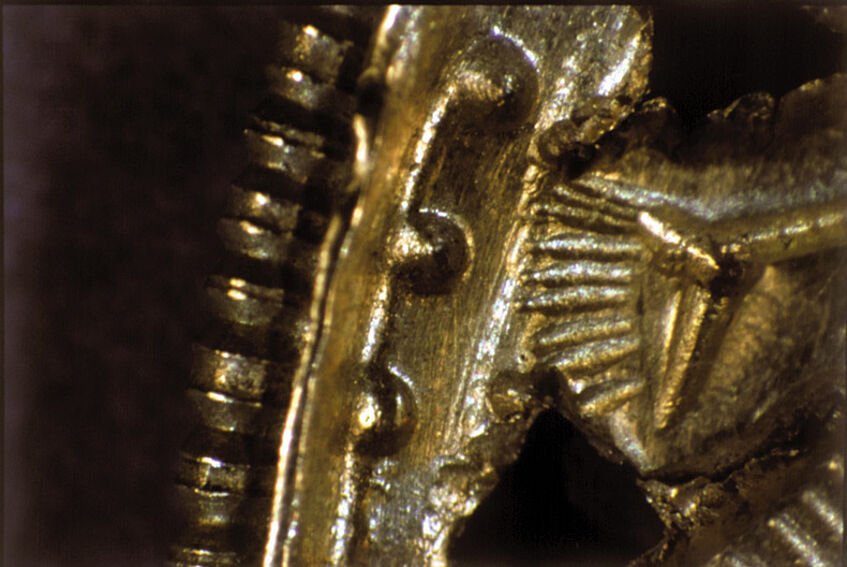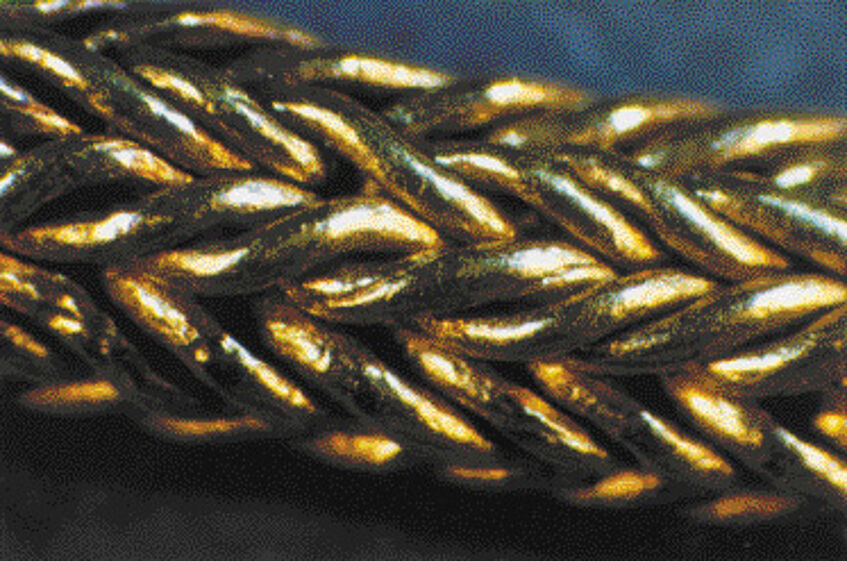Technology of Gold-, Silver-, and Copper Alloy Metalwork
Mag. Dr. Birgit Bühler
Light microscopic investigations on archaeological non-ferrous and precious metal objects are used for observation and photographic documentation of all technological features recognisable on the surface (e.g. tool marks, solder joints, granulation, filigree, niello) and therefor represent an important prerequisite for all further metallurgical investigations. The observed features are recorded for each object in a short description. In many cases, the result of the light microscopic investigations also serves as a decision-making aid as to whether further investigations (scanning electron microscopy, material analyses, microstructure investigations, experimental-archaeological methods) are necessary or sensible at this particular object and at which part of the object they are to be performed.
British Museum (London), Department of Medieval and Later Antiquities, Inv. Nr. M + LA 1923, 7-16, 67: Gold earring from the Crimea (Ukraine). Detail - Irregular kerfed wire at the bottom part of the earring (created by «rolling» with a simple blade).
The observation of technological features, supplemented by the results of microstructural investigations, material analyses and experimental-archaeological methods, allows a reconstruction of the manufacturing process of individual objects and the formation of "technological" groups, which can be compared with the results of the archaeological evaluation. Particularly promising in this context seems to be a comparative examination of the tool marks, with particular attention to the fine tools (in particular piercers, chisels, different types of punches). For the linear decorating techniques, mainly three types of tools are used (piercers, chisels and punches). Piercers and chisels are «cutting tools», they have a sharp working edge, and metal is removed when they are used. The so resulting notch is V-shaped in its cross-section for both tool types, while "chipless machining" with a blunt-edged tool (e.g. a punch) merely deforms the metal and therefore leaves a rather U-shaped notch. Another basic distinguishing feature is whether the tool was guided by hand (mainly piercers) or with as driven forward with a hammer (chisels, punches). The latter can be recognised in most cases by numerous "breaks" running transversely to the longitudinal axis of the notch. On the other hand, engraved (i.e., carved) lines often show relatively fine scratches running parallel to the longitudinal axis. First, a detailed photographic documentation using the optical microscope, in some cases also on the scanning electron microscope is required. Scanning electron micrographs allow better detection and accurate measurement of tool marks. In addition to the recognition of different tool types, the identification of certain tools is possible on a case-by-case basis.
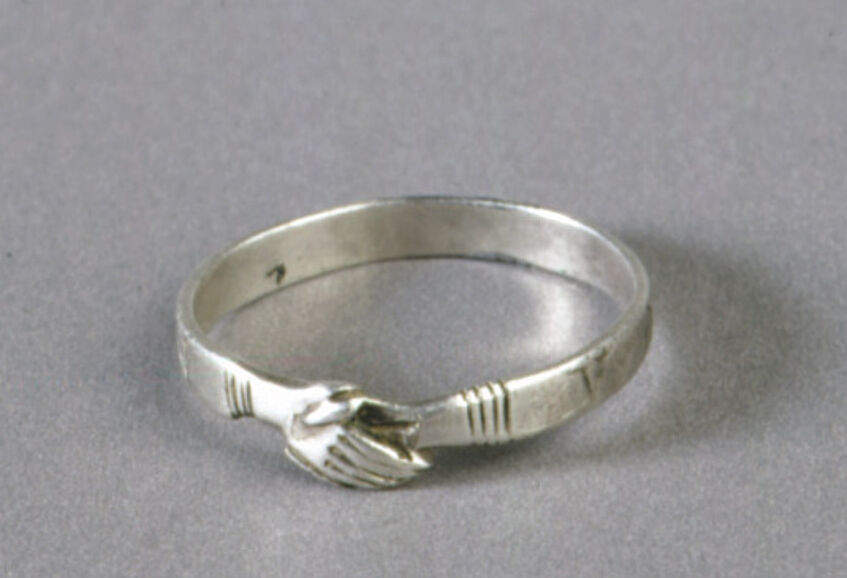
Oberösterreichisches Landesmuseum, hoard of the "Fuchsenhof" near Freistadt, Upper Austria (late 13th century), No. 7.17, finger ring, silver (Scanning electron micrograph - LEO 1455VP): The forged ends of the ring were soldered together and designed as a simple "handshake" by engraving and filing.
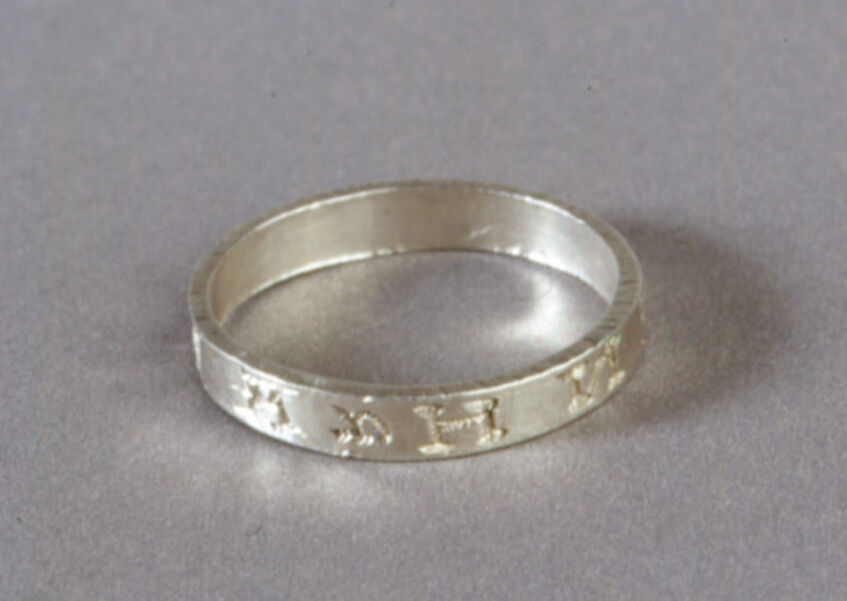
Oberösterreichisches Landesmuseum, hoard of the "Fuchsenhof" near Freistadt, Upper Austria (late 13th century), No. 7.19, finger ring, silver: detail of an inscription (Scanning electron micrograph - LEO 1455VP). The tool marks suggest the use of two different tool types (chisel and piercer).
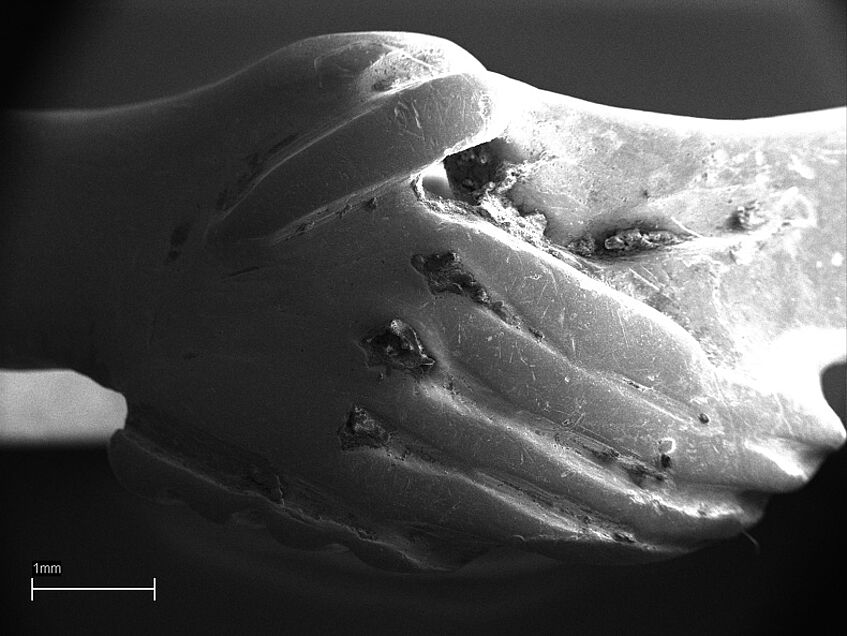
Oberösterreichisches Landesmuseum, hoard of the "Fuchsenhof" near Freistadt, Upper Austria (late 13th century), No. 7.17, finger ring, silver (Scanning electron micrograph - LEO 1455VP): detail
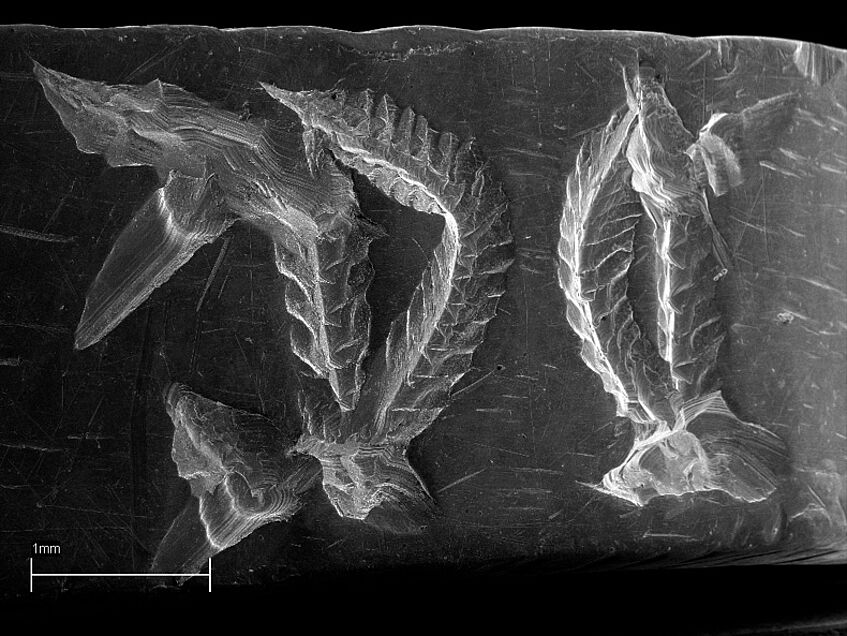
Oberösterreichisches Landesmuseum, hoard of the "Fuchsenhof" near Freistadt, Upper Austria (late 13th century), No. 7.19, finger ring, silver: detail
Ideally, the light microscopic examination of the surface can yield completely new insights into the production of a specific object. For example, when looking at the belt made of sheet gold dating to the Mid-Awarian Period from Igar-Vámszölöhegy (Find III) under the light microscope, the ornamentation of the overwhelming majority of the components shows individual tool marks, meaning that they where in no way - as originally suspected - produced using press plates.
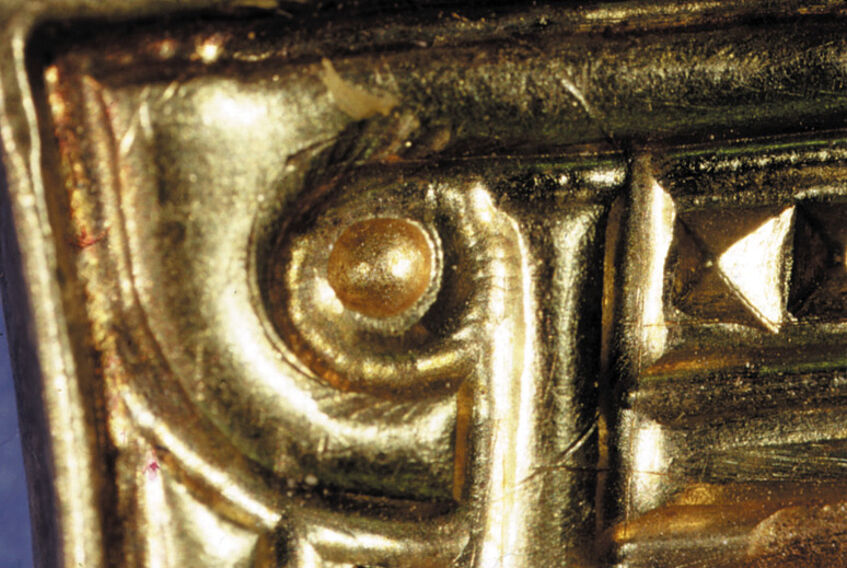
Istvan Kiraly Museum, Szekesfehervar, Inv. No. 8003, Igar-Vámszölöhegy, Find III, crest-shaped fitting made of gold plate, Mid-Avar period (last third of the 7th century). Detail (frontside): Fine scoring lines as a preliminary drawing for the chased and punched linterlacing ornament. In addition, imprints of two different sample punches (round, square) and fan-shaped breacks in the area of curved lines, resulting from the use of a straight-edged punch.
This means, that the object has not been "mass-produced", but is rather custom-made with considerable effort. The interlacing ornamental components of this belt set show pre-drawings in scratching technique barely visible with the naked eye. These limit the contours of the chased or punched ornament. The contours of the braids were punched.
The four small strap-ends, which are decorated much simpler, were not made with press plates: Fine scoring lines serve as a preliminary drawing for the areas, that are embraced by coarse lines and filled with rectangular puches, fields.
In the area of the lower field, the number of rectangular punches varies, even at the three similarly designed strap-ends. Again, there are braeks in the area of punced grooves, which result from pushing the punch with a hammer.

